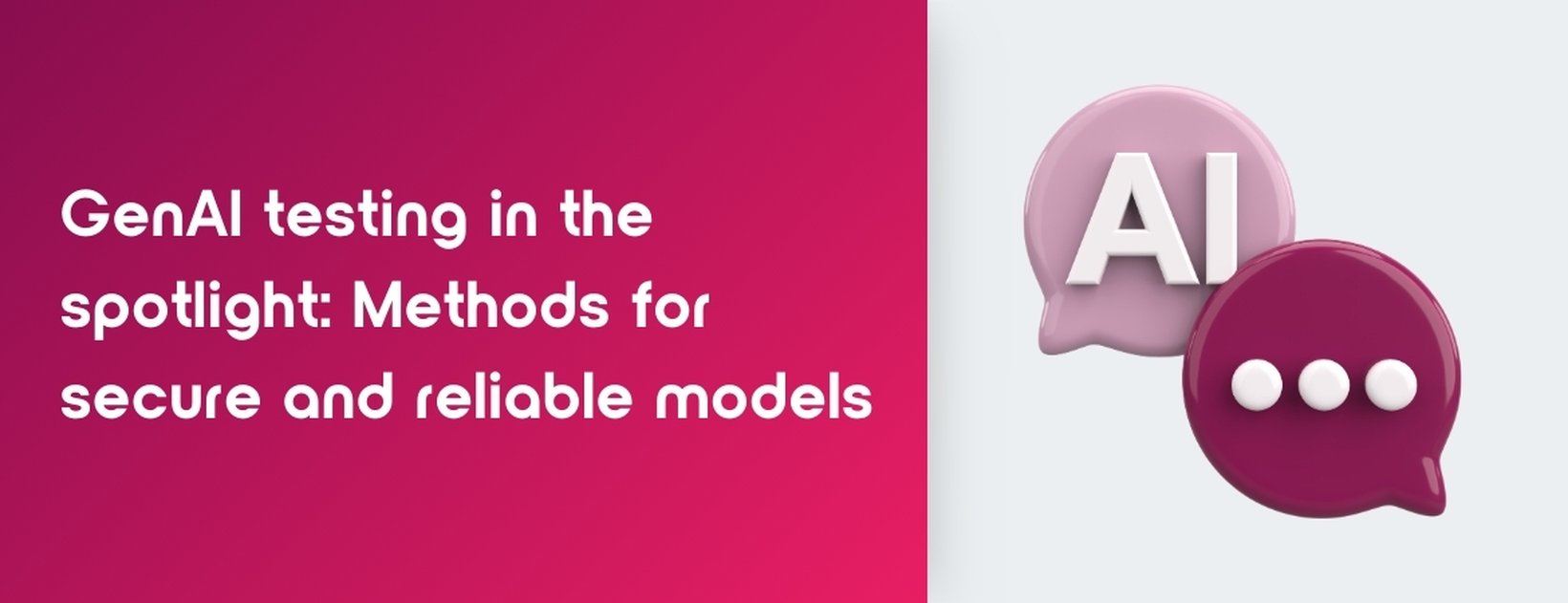To work with models, there are a few important points to keep in mind. In this article, we will show you what to look out for and how to best test your model.
Why GenAI testing is relevant now
Generative AI (GenAI) is no longer a topic for the future: it is finding its way into numerous software products – from text generators and code completion to chatbots based on large language models (LLMs). The possibilities seem limitless. But with great power comes great responsibility: quality assurance for such systems presents QA teams with new challenges.
GenAI in software development
Unlike traditional programs, GenAI models are probabilistic systems. The same inputs do not necessarily produce the same outputs. This non-deterministic nature requires a rethink of established testing strategies. At the same time, GenAI offers great potential – for example, in the generation of test data or in automated bug reporting.
Risks and challenges
- Hallucinations: Models invent apparent facts.
- Bias: Discriminatory responses can damage your image.
- Data protection: Confidential content must not be reconstructable.
- Explainability: Decisions often remain opaque.
What is GenAI testing?
Differentiation from classic software testing
In classic testing, we check functional requirements against expected results. GenAI testing, on the other hand, evaluates the quality, reliability, and ethics of generative models.
Specific features of LLMs and generative models
- Black box character
No deterministic behavior
Constant updates to learning content
Sensitivity to input variations (prompt engineering)
Methods for GenAI testing
Black box vs. white box testing
- Black box: Focus on input/output validation in production-like scenarios
White box: Access to model details, suitable for research and audits, but very difficult due to high complexity
Prompt engineering and evaluation
Carefully formulated prompts enable reproducible tests. Important evaluation criteria: factual accuracy, stylistic consistency, lack of bias, and contextual understanding.
Test data generation and validation
GenAI can even be used for synthetic data, adversarial testing, and edge cases. Validation is performed using gold standard data sets or benchmarks.
Tools for GenAI testing
Tools in comparison
- OpenAI Eval: Evaluation of LLM outputs
Promptfoo: Prompt testing with metric tracking
DeepChecks for LLMs: Automated quality checking
Selection criteria for QA teams
- Openness and adaptability
Automation
Transparent metrics (e.g., BLEU, ROUGE, toxicity score)
CI/CD integration
Integrate GenAI testing into QA processes
Automation
APIs and scripting tools enable automated A/B testing or prompt variant comparisons.
Continuous integration & pipelines
- Tests as part of the build pipeline (e.g., via GitHub Actions)
Threshold values as gating criteria
Regression tests for model updates
Conclusion and recommendations
GenAI testing is not a "nice to have" but essential for companies that want to use AI responsibly. It requires new testing strategies, tools, and skills.
Tips for QA teams:
- Get involved in model development at an early stage
Build up prompting skills
Continuously evaluate your toolset
Work with benchmarks
Want to set up GenAI testing professionally? Our training courses and consulting services can help you. Find out more and get started now!
FAQ: GenAI testing
What is GenAI testing? Testing generative AI models for quality, ethics, and reliability—more than just functional testing.
What are the challenges? Hallucinations, bias, data protection risks, and non-transparent models.
How does prompt-based testing work? The behavior of an LLM is tested using targeted prompts.
Which tools can help? Promptfoo, OpenAI Eval, DeepChecks, and more.
How can GenAI testing be automated? Via API access, scripting, and CI/CD integration.
What role does GenAI play in classic QA? It complements existing methods with new possibilities such as test data generation – but also introduces new risks.
